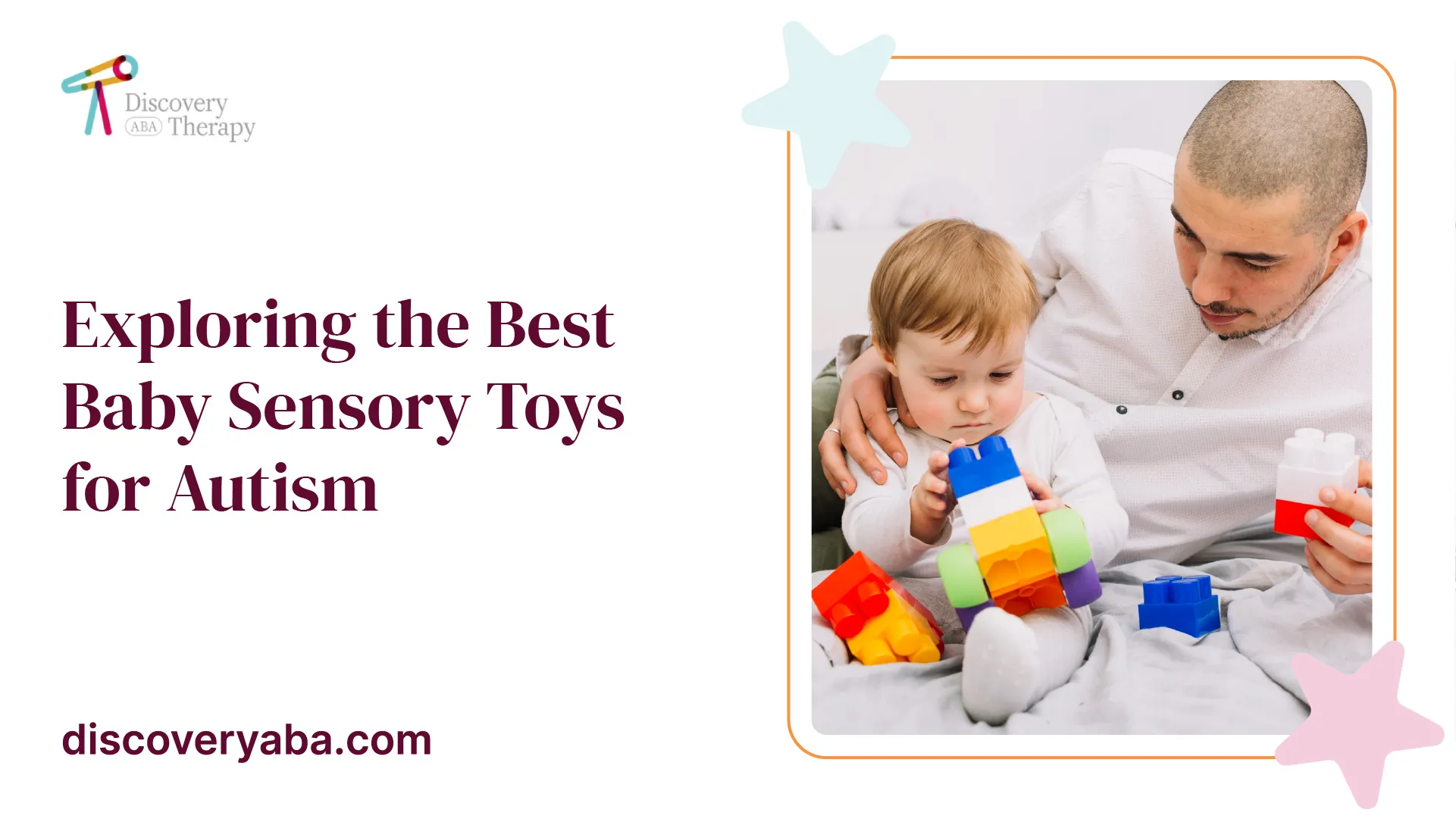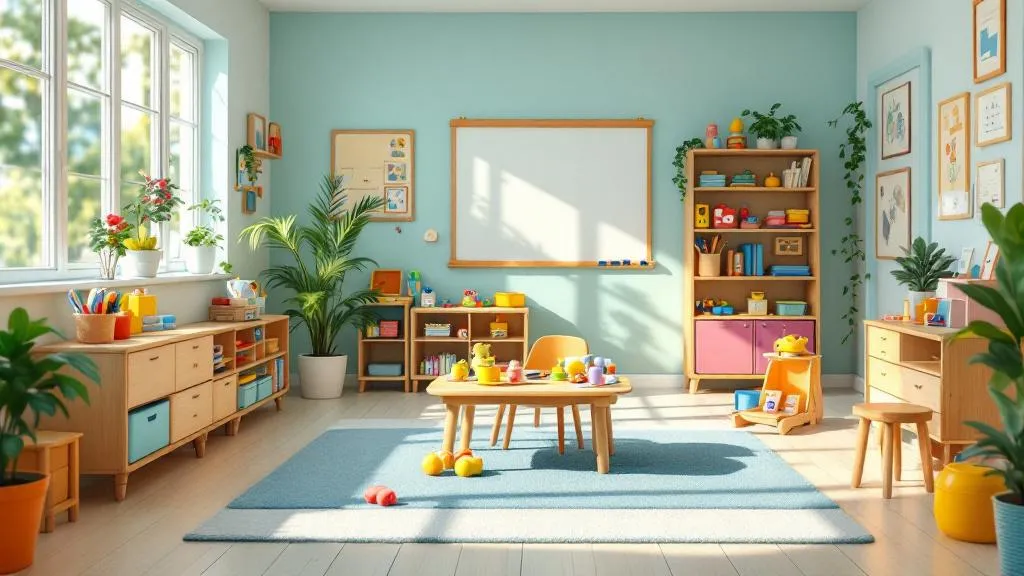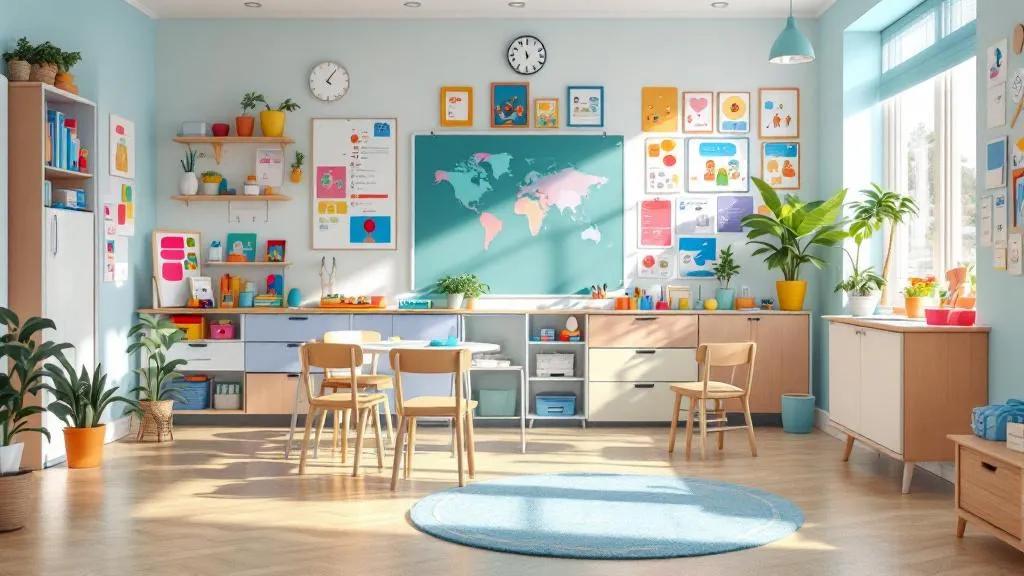Exploring the Best Baby Sensory Toys for Autism
Discover the best baby sensory toys for autism, promoting cognitive development, social growth, and emotional well-being.

Understanding Sensory Toys
Sensory toys play a pivotal role in the development and well-being of children with autism, providing sensory stimulation that promotes cognitive, social, and emotional growth [1]. These toys are specifically designed to provide sensory experiences that engage children with their environment in a meaningful way, helping them explore and understand the world around them.
Importance of Sensory Toys
Sensory toys offer numerous benefits for children with autism, enhancing their cognitive, social, and emotional development. These toys provide a safe and structured way for children to experience different sensations, helping them develop their sensory processing abilities. By engaging multiple senses, sensory toys encourage sensory integration and processing abilities, promoting physical development, including hand-eye coordination and spatial awareness.
Children with autism often face challenges in sensory processing, and sensory toys provide a valuable avenue for them to navigate these difficulties. These toys create opportunities for children to explore different textures, sounds, colors, and movements, aiding in the development of sensory processing skills. By engaging with sensory toys, children with autism can improve their focus, attention, and self-regulation, ultimately leading to a sense of calm and comfort, reducing anxiety and stress levels.

Therapeutic Benefits
Sensory toys offer therapeutic benefits for children with autism, helping them focus, pay attention, relieve stress, and promote relaxation. The sensory stimulation provided by these toys can be both calming and engaging, aiding in sensory regulation and emotional well-being. When children interact with sensory toys, they can experience a sense of comfort and control, which can be particularly beneficial during times of heightened anxiety or sensory overload.
Moreover, sensory toys promote cognitive development by stimulating the senses and encouraging exploration. These toys provide opportunities for children to learn about cause and effect, object permanence, spatial relationships, and problem-solving skills. Through sensory play, children can enhance their concentration, memory, and critical thinking abilities.
Additionally, sensory toys facilitate social growth by encouraging interaction and cooperation. When children engage in sensory play together, they learn to share, take turns, and communicate effectively. These interactions can foster social skills, empathy, and understanding of others.
In summary, sensory toys not only provide enjoyment and entertainment but also serve as valuable tools for children with autism. They offer a structured and therapeutic way to engage with the world, promote sensory processing abilities, enhance cognitive development, facilitate social interactions, and contribute to the overall well-being of children with autism.
Types of Sensory Toys
When it comes to choosing sensory toys for babies with autism, it's important to consider the different types of toys available. Sensory toys can come in various forms, each designed to stimulate specific sensory systems and promote development. In this section, we will explore three common types of sensory toys: tactile stimulation toys, oral stimulation toys, and visual stimulation toys.
Tactile Stimulation Toys
Tactile stimulation toys focus on engaging a child's sense of touch. These toys are designed to provide different textures and surfaces for babies to explore and manipulate. Tactile stimulation toys can include textured balls, squishy toys, and toys with different fabric or material surfaces. These toys play a significant role in improving sensory processing skills in children with autism, helping them develop a better understanding of their environment through touch.
Oral Stimulation Toys
Oral stimulation toys are specifically designed to provide sensory input and comfort through the mouth. These toys can help reduce anxiety, improve focus and attention, and promote self-regulation. Examples of oral stimulation toys include chewy tubes, vibrating toothbrushes, and teething toys. These toys provide appropriate oral sensory input and can be especially beneficial for babies with sensory processing difficulties related to their mouths.
Visual Stimulation Toys
Visual stimulation toys are crafted to captivate and engage a child's visual senses. These toys are designed to provide visual input that helps babies develop visual tracking skills, enhance focus, and improve eye-hand coordination. Visual stimulation toys can include toys with bright colors, contrasting patterns, moving parts, or visual effects. These toys encourage visual exploration and can be particularly beneficial for babies with autism who may have challenges with visual attention and tracking [4].
While tactile, oral, and visual stimulation toys are commonly used for babies with autism, it's important to remember that each child is unique. It's essential to observe and understand your baby's individual sensory preferences and sensitivities when selecting sensory toys. By providing a variety of sensory experiences, you can support your baby's sensory development and overall well-being.
Benefits of Sensory Toys for Autism
Sensory toys play a pivotal role in the development and well-being of children with autism, providing sensory stimulation that promotes cognitive, social, and emotional growth. These toys offer therapeutic benefits, helping children with autism to focus, pay attention, relieve stress, and promote relaxation. Let's explore the specific benefits of sensory toys for children with autism in terms of cognitive development, social growth, and emotional well-being.
Cognitive Development
Sensory toys provide a safe and structured way for children with autism to experience different sensations and develop their sensory processing abilities. These toys engage multiple senses and encourage sensory integration and processing abilities, promoting physical development, including hand-eye coordination and spatial awareness. By interacting with sensory toys, children with autism can enhance their cognitive skills, such as problem-solving, decision-making, and logical thinking.
Social Growth
Sensory toys aren't just for learning purposes; they also provide opportunities for social interactions among children with autism. These toys encourage engagement and play, fostering social growth and communication skills. Through shared sensory experiences, children with autism can connect with others, engage in cooperative play, and develop social bonds. Sensory toys provide a common ground for children to engage in imaginative play, turn-taking, and collaboration, which are essential skills for building relationships and socializing.
Emotional Well-being
Sensory toys have a calming and soothing effect on children with autism, aiding in relaxation and emotional well-being. These toys help children focus, relax, and calm down, providing a distraction from feelings of anger, meltdowns, or being upset [5]. The stimulation provided by sensory toys can reduce anxiety and stress levels, promoting a sense of calm and comfort. By engaging with sensory toys, children with autism can experience a sense of control, self-regulation, and emotional stability.
In summary, sensory toys offer numerous benefits for children with autism, including cognitive development, social growth, and emotional well-being. These toys provide sensory stimulation that fosters cognitive skills, enhances social interactions, and promotes emotional regulation. By incorporating sensory toys into playtime and therapy sessions, children with autism can experience a range of positive outcomes that contribute to their overall development and quality of life.
Specialized Sensory Toys
When it comes to providing sensory stimulation and support for children with autism, specialized sensory toys play a crucial role. These toys are designed to cater to the unique sensory needs of children on the autism spectrum. In this section, we will explore three types of specialized sensory toys: weighted blankets and toys, DIY sensory toys, and toys that engage multiple senses.
Weighted Blankets and Toys
Weighted blankets and toys are known to provide tactile stimulation and deep pressure, which can aid in relaxation and promote better sleep routines for children with autism. The gentle, distributed weight of these blankets and toys can have a calming effect on individuals with sensory sensitivities.
One example of a specialized sensory toy is the Weighted Sensory Turtle Lap Pad. This lap pad offers a calming effect and provides sensory and tactile input for children with autism. Its lightweight and portable design allow it to be easily carried around, providing comfort and sensory stimulation wherever it is needed [6].
DIY Sensory Toys
DIY sensory toys are another option for parents and caregivers looking to provide sensory experiences for children with autism. These toys can be made using simple household items and materials, allowing for customization based on the individual child's needs and preferences.
Engaging in DIY sensory toy projects not only provides an opportunity for creativity and bonding but also allows parents and caregivers to tailor the toys to address specific sensory challenges. From sensory bottles filled with various textures and colors to sensory bins filled with materials like rice or sand, there are endless possibilities for creating DIY sensory toys that cater to individual preferences and sensitivities.
Engaging Multiple Senses
Toys that engage multiple senses can be particularly beneficial for children with autism. These toys provide opportunities for sensory integration and processing, promoting physical development, hand-eye coordination, and spatial awareness. Additionally, engaging multiple senses can make playtime more enjoyable and soothing for children, encouraging social interactions.
Examples of toys that engage multiple senses include those with textured surfaces, vibrant colors, various sounds, and different tactile elements. By stimulating multiple sensory pathways simultaneously, these toys encourage holistic sensory experiences and promote overall development.
When selecting specialized sensory toys for children with autism, it's essential to consider the child's unique sensory needs and sensitivities. Each child may respond differently to different types of sensory stimulation, so it's important to observe their preferences and consult with therapists and professionals who can provide guidance.
By incorporating weighted blankets and toys, DIY sensory toys, and toys that engage multiple senses into a child's playtime routine, parents and caregivers can support their sensory development, provide comfort, and encourage social interactions. These specialized sensory toys play a valuable role in creating a supportive and enriching environment for children with autism.
Sensory Toy Considerations
When choosing sensory toys for children with autism, it's important to consider their specific sensory needs, preferences, and sensitivities. Understanding whether a child is hyper-sensitive or hypo-sensitive can guide the selection of appropriate toys. Reflective balls can be particularly beneficial, and personalized solutions are key to meeting individual needs.
Hyper-sensitive vs. Hypo-sensitive
Children with autism may exhibit hyper-sensitivity or hypo-sensitivity to sensory stimuli. Hyper-sensitive children are overly responsive to stimulants, often experiencing sensory overload from bright lights or strong smells. On the other hand, hypo-sensitive children are under-responsive to senses and stimulants, such as having low sensitivity to pain.
When selecting sensory toys, it's essential to take these sensitivities into account. Toys that provide gentle stimulation and avoid overwhelming sensory input are often preferred for hyper-sensitive children. For hypo-sensitive children, toys that offer more intense sensory experiences can help them engage and interact with their environment.
Reflective Balls
Reflective balls are valuable sensory toys for children with autism, particularly those with ADHD. These toys help in developing visual senses and can be especially beneficial for children who may have difficulties processing visual sensory information. The reflective surfaces of the balls capture light and movement, stimulating visual engagement and tracking skills.
By interacting with reflective balls, children can improve their visual processing abilities and hand-eye coordination. These toys provide opportunities for focused play and can be used to encourage tracking and following objects.
Personalized Solutions
Every child with autism is unique, and personalized solutions are crucial to address their specific needs. Sensory toy preferences can vary widely among children, and it's essential to consider individual interests and sensitivities when selecting toys.
To provide a personalized sensory experience, it's helpful to involve the child in the selection process. Observe their reactions and preferences during play and identify the types of sensory input they enjoy or respond positively to. By tailoring the selection of toys to their individual preferences, you can create a more engaging and meaningful sensory play experience.
In addition to individual preferences, consider the child's developmental stage and abilities. Choose toys that are age-appropriate and provide appropriate sensory challenges for their skill level. Personalized solutions ensure that the child's specific sensory needs are met, promoting engagement, comfort, and enjoyment during play.
By considering the hyper-sensitivity or hypo-sensitivity of the child, incorporating reflective balls, and embracing personalized solutions, you can effectively choose sensory toys that cater to the unique needs of children with autism. Sensory toys play a vital role in supporting their development, providing opportunities for relaxation, focus, social interactions, and overall sensory integration.
Role of Sensory Toys
Sensory toys play a crucial role in the development and well-being of children, particularly those with autism. They provide various benefits, including motor skills development, social interactions, and sensory play for neurodiverse children.
Motor Skills Development
Sensory toys can significantly contribute to the development of motor skills in children. These toys engage multiple senses, encouraging sensory integration and processing abilities. Through sensory play, children can enhance their hand-eye coordination, spatial awareness, and fine motor skills. Manipulating different textures, grasping objects, and exploring sensory-rich materials can strengthen their dexterity and improve their overall physical abilities.
Social Interactions
One of the remarkable aspects of sensory toys is their ability to foster social interactions among children. Regardless of their sensory preferences, sensory toys create a common ground for children to bond and understand one another. By engaging in sensory play together, children can develop shared experiences, learn to take turns, and practice cooperation. These interactions promote inclusivity, empathy, and social skills that are essential for building relationships and navigating social situations.
Sensory Play for Neurodiverse Children
Sensory play holds immense promise for neurodiverse children, including those with autism or sensory processing disorders. The versatility of sensory play makes it an effective tool for addressing their unique needs and challenges. The sensory input provided by these toys can help regulate sensory sensitivities, reduce anxiety, and improve focus. Sensory play allows children to explore their environment, develop self-awareness, and engage in self-calming techniques. It also offers a safe and enjoyable outlet for self-expression, creativity, and emotional regulation.
Occupational therapists often recommend the use of sensory toys, such as spinners, chew toys, cubes, rings, and hand toys, for children with autism. These toys can help children focus, calm down in stressful situations, and relax. Spinners, also known as "fidget spinners," have been used successfully as interventions for children with autism, attention deficit disorder (ADD), and attention-deficit/hyperactivity disorder (ADHD), helping them stay engaged and focused on larger tasks.
In conclusion, sensory toys play a vital role in the development and well-being of children, particularly those with autism. They contribute to motor skills development, facilitate social interactions, and provide valuable sensory play experiences for neurodiverse children. By incorporating sensory toys into playtime, children can enhance their physical abilities, build social skills, and explore their senses in a supportive and enriching environment.
References
- https://www.crossrivertherapy.com/autism/baby-sensory-toys-for-autism
- https://www.forbes.com/sites/jenniferpalumbo/2023/10/10/the-power-of-sensory-play-in-childhood-development/
- https://behaviortlc.com/blog/sensory-toys-for-children-with-autism/
- https://www.healthline.com/health/parenting/toys-for-kids-with-autism
- https://carmenbpingree.com/blog/best-sensory-toys-for-children-with-autism/
- https://www.autismparentingmagazine.com/best-sensory-toys/
Does Your Child Have An Autism Diagnosis?
Learn More About How ABA Therapy Can Help
Find More Articles
Contact us
North Carolina, Tennessee, Nevada, New Jersey, Utah, Virginia
New Hampshire, Maine
Massachusetts, Indiana, Arizona, Georgia
.avif)




































































































